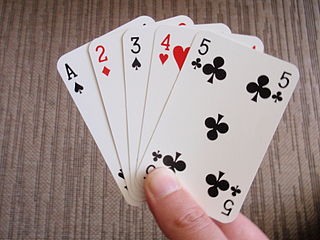
A cartoon is a type of illustration, possibly animated, typically in a non-realistic or semi-realistic style. The specific meaning has evolved over time, but the modern usage usually refers to either: an image or series of images intended for satire, caricature, or humor; or a motion picture that relies on a sequence of illustrations for its animation. Someone who creates cartoons in the first sense is called a cartoonist, and in the second sense they are usually called an animator.

Thomas Nast was a German-born American caricaturist and editorial cartoonist often considered to be the "Father of the American Cartoon". He was a critic of Democratic Representative "Boss" Tweed and the Tammany Hall Democratic party political machine. Among his notable works were the creation of the modern version of Santa Claus and the political symbol of the elephant for the Republican Party (GOP). Contrary to popular belief, Nast did not create Uncle Sam, Columbia, or the Democratic donkey, though he did popularize these symbols through his artwork. Nast was associated with the magazine Harper's Weekly from 1859 to 1860 and from 1862 until 1886.
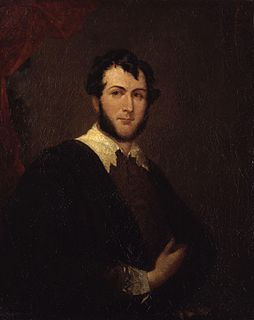
George Cruikshank was a British caricaturist and book illustrator, praised as the "modern Hogarth" during his life. His book illustrations for his friend Charles Dickens, and many other authors, reached an international audience.
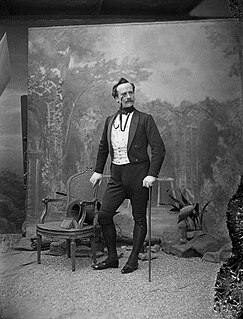
Caran d'Ache was the pseudonym of the 19th century French satirist and political cartoonist Emmanuel Poiré. "Caran d'Ache" comes from the Russian word karandash (карандаш), meaning pencil. While his first work glorified the Napoleonic era, he went on to create "stories without words" and as a contributor to newspapers such as the Le Figaro, he is sometimes hailed as one of the precursors of comic strips. The Swiss art products company Caran d'Ache is named after him.
In the broadest sense, merchandising is any practice which contributes to the sale of products to a retail consumer. At a retail in-store level, merchandising refers to the variety of products available for sale and the display of those products in such a way that it stimulates interest and entices customers to make a purchase.

Spy Groove is an American adult animated series that aired for one season on Teletoon in Canada and for six episodes on MTV in the United States. It premiered on June 26, 2000 and ended on July 13, 2002. Spy Groove was created by Michael Gans, Richard Register and Kevin Thomsen, who also wrote and did the voices for the show. The general plot is about two suave yet cocky secret agents, Agent Number One and Agent Number Two, their boss, Helena Troy, who assigned them their missions. Like the tone of MTV's animated programs, Spy Groove is consistently tongue-in-cheek and often employs fast-paced banter between the protagonists. It also features a number of pop songs in some episodes at the time of its broadcast.
Philipp Rupprecht was a German cartoonist best known for his anti-Semitic caricatures in the Nazi publication Der Stürmer, under the pen-name Fips.
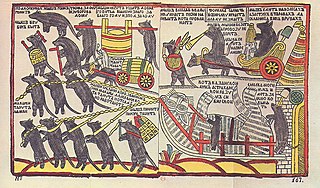
A lubok is a Russian popular print, characterized by simple graphics and narratives derived from literature, religious stories, and popular tales. Lubki prints were used as decoration in houses and inns. Early examples from the late 17th and early 18th centuries were woodcuts, then engravings or etchings were typical, and from the mid-19th century lithography. They sometimes appeared in series, which might be regarded as predecessors of the modern comic strip. Cheap and simple books, similar to chapbooks, which mostly consisted of pictures, are called lubok literature or. Both pictures and literature are commonly referred to simply as lubki. The Russian word lubok derives from lub - a special type of board on which pictures were printed.

Bad Reporter is a semi-weekly editorial cartoon in comic strip format that first appeared in the San Francisco Chronicle on September 25, 2003. After being syndicated by Universal Press Syndicate from August 12, 2005 to 2011, it is now distributed by Andrews McMeel Syndication.
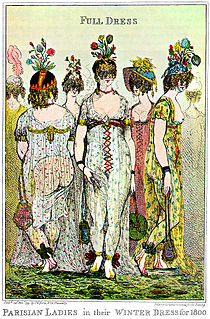
The Incroyables and their female counterparts, the Merveilleuses, were members of a fashionable aristocratic subculture in Paris during the French Directory (1795–1799). Whether as catharsis or in a need to reconnect with other survivors of the Reign of Terror, they greeted the new regime with an outbreak of luxury, decadence, and even silliness. They held hundreds of balls and started fashion trends in clothing and mannerisms that today seem exaggerated, affected, or even effete. Some devotees of the trend preferred to be called "incoyable" or "meveilleuse", thus avoiding the letter R, as in "révolution." When this period ended, society took a more sober and modest turn.
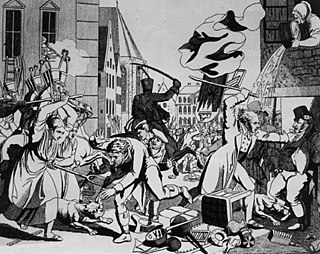
Johann Michael Voltz was a German painter, graphic artist and political cartoonist.
Bruce MacKinnon is a Canadian editorial cartoonist for The Chronicle Herald in Halifax, Nova Scotia. He is the recipient of several awards of excellence for his work.

La Caricature was a satirical weekly published French periodical that was distributed in Paris between 1830 and 1843 during the July Monarchy. Its cartoons repeatedly attacked King Louis Philippe, whom it typically depicted as a pear.
The Nazi party used cartoons and caricatures as a main part of their propaganda regime and as an effective way to send out their message and spread their opinions across Nazi Germany. The use of caricatures was a popular method within the party when pursuing their campaign against America, in particular President Franklin D. Roosevelt.

The Plumb-pudding in danger, or, State Epicures taking un Petit Souper, is an 1805 editorial cartoon by the English artist James Gillray. The popular print depicts caricatures of the British Prime Minister William Pitt the Younger and the newly-crowned Emperor of France Napoleon, both wearing military uniforms, carving up a terrestrial globe into spheres of influence. It was published as a hand-coloured print and has been described by the National Portrait Gallery as "probably Gillray's most famous print" and by the British Library as "one of Gillray’s most famous satires dealing with the Napoleonic wars".





